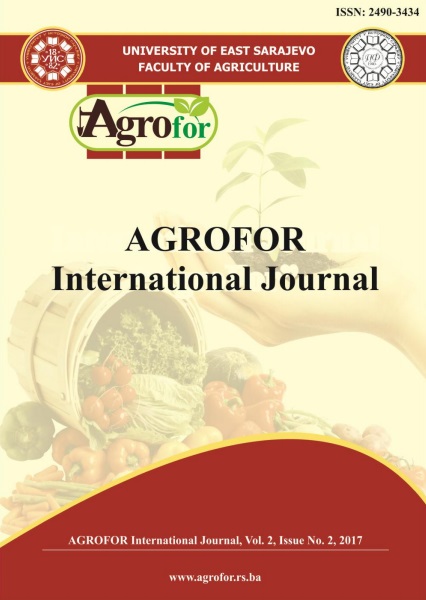MICROMORPHOLOGY OF POLLEN GRAINS FROM BISEXUAL AND FUNCTIONAL MALE FLOWERS OF POMEGRANATE
DOI:
https://doi.org/10.7251/AGRENG1702040EAbstract
Modern taxonomy uses pollen grain morphology as an important tool due to its
specific and diverse features. Pomegranate is an andromonoecious species having
two type flowers on the same plant, in other words, hermaphrodite flowers
(bisexual) and male flowers (functional male flowers) that develop on the same
plant. The length of polar axis (P) and the equatorial diameter (E) as well as P/E
ratio of pollen grains, collected from both bisexual and functionally male flowers
of the cultivar ‘Caner I’, were analyzed using scaning electron microscopy (SEM).
The length of polar axis (P), the equatorial diameter (E), and P/E ratio was
compared between the two grain. The sculpturing pattern of the exine of both type
flowers was striate, with more parallel longitudinal ridges Pollen from both
bisexual and functional male flower types is similar in size (≈21 μm). In contrast to
the divergent pistil development observed between bisexual and functional male
pomegranate flowers, no differences in pollen morphology were detected. The
pollens had prolate shape (P\E=1.65 vs 1.59) in both types of flowers.

